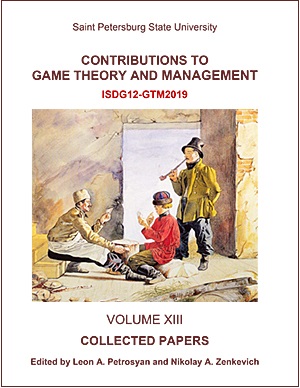Optimal Pricing Structure in a Maintenance Contract: A Game Theory Approach
DOI:
https://doi.org/10.21638/11701/spbu31.2020.21Abstract
This essay presents a novel look at Murthy and Asgharizadeh's study (Murthy & Asgharizadeh, 1998). The authors developed a decision problem applied to maintenance outsourcing involving two decision-makers (players). If a consumer buys a product, then outsources the maintenance actions to a maintenance agent (agent) who offers two maintenance options; a maintenance contract that holds a penalty clause which is activated if the agent's time to repair is higher than a specified time, and services on-demand. The model yields equilibrium strategies based on the subgame-perfect Nash equilibrium. The agent defines the optimal pricing structure for the maintenance options considering the equipment's useful life while the consumer maximizes their expected payoff by choosing one maintenance option. Our contribution to this research branches in three ways. First, once the model deals with random variables, it represents a stochastic optimization problem. We propose a different approach to estimate this penalty time by using the Monte Carlo method. The second contribution is to present a formal definition of this decision problem as a game, emphasizing the game theory's components. Finally, we reinterpret the players' equilibrium strategies.
Keywords:
Game theory, Maintenance outsourcing, Simulation, Equilibrium strategies, Expected payoffs
Downloads
References
Downloads
Published
How to Cite
Issue
Section
License
Articles of "Contributions to Game Theory and Management" are open access distributed under the terms of the License Agreement with Saint Petersburg State University, which permits to the authors unrestricted distribution and self-archiving free of charge.




